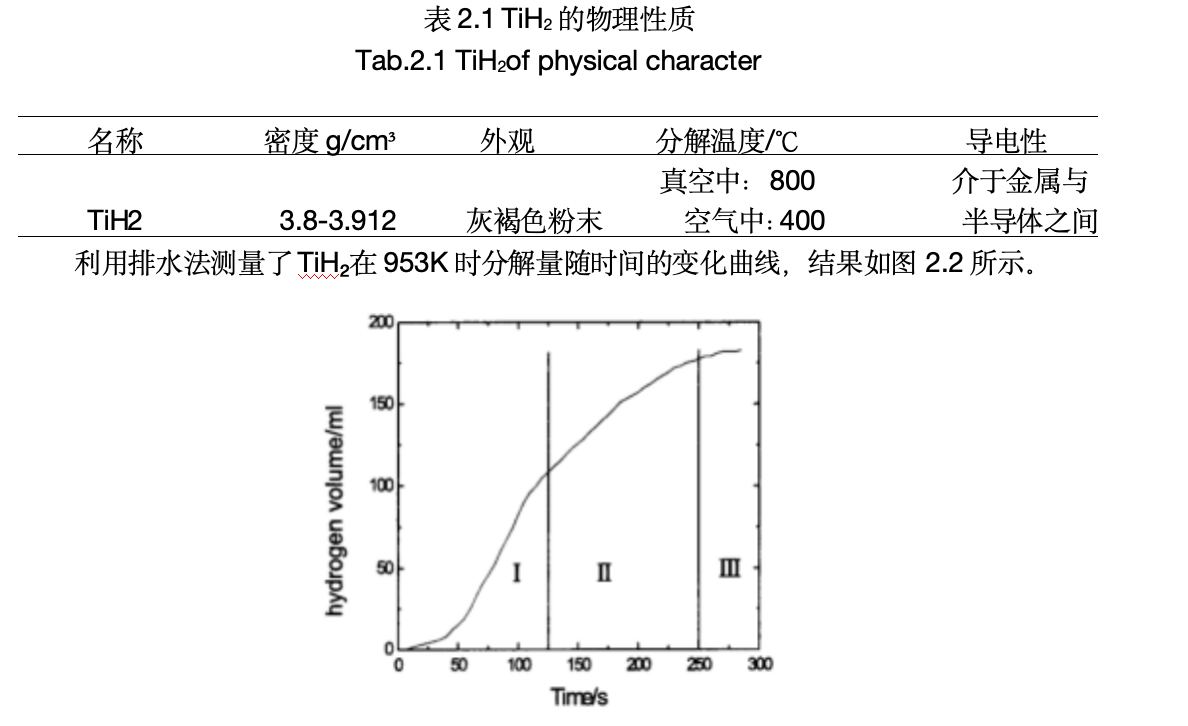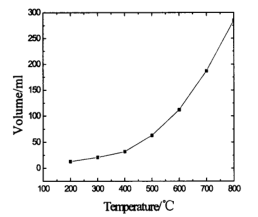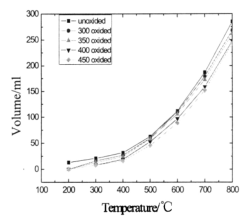
Aluminum foam is a new type of composite material with a wide range of application prospects. It not only has the excellent performance of high solid metal strength and good thermal conductivity, but also has the characteristics of damping, sound insulation and heat insulation due to its internal distribution of porosity structure. Its excellent performance has attracted the attention of many scientific and technological researchers at home and abroad. In the preparation method of aluminum foam, because the preparation process of melt foaming method is simple and the preparation cost is relatively low, it is more promising to realize large-scale industrial production. Aluminum foam has been used in aerospace, automotive and military industries.
1. Performance of aluminum foam
Because of the difference in the structure of the bubble, there are many differences in the performance of aluminum foam, so it can be applied in different aspects. Compared with traditional metals, foam metal has many excellent properties, such as:
1.1 Low density
Because there is a large number of bubble structures inside aluminum foam, its density is very small compared with solid materials of the same volume. The density range of aluminum foam prepared at home and abroad is about 0.2-1.2g/cm³, and compared with continuous phase aluminum, the density of aluminum foam is about 1/2-1/10 of solid aluminum. At present, the porosity of aluminum foam prepared is about 40%-98%, and the pore size ranges from several microns to tens of millimeters. Generally, the density of aluminum foam becomes smaller with the increase of the pore size of aluminum foam.
1.2 Energy absorption performance
Aluminum foam is composed of aluminum matrix and a large number of bubbles, and the existence of internal bubbles makes it have better energy absorption characteristics. When aluminum foam is subjected to external impact, the strain will lag behind the stress due to the inhomogeneity of its structure. When aluminum foam is subjected to impact, there are many platform areas in its stress-strain curve. Therefore, the stress of aluminum foam will not change in a large range, but the external impact energy will be converted into the work done when aluminum foam is deformed. This makes it have good energy absorption characteristics and high energy absorption rate. The energy absorption properties of aluminum foam can be used as automotive brakes, clamping devices, and protective sleeves and buffers in aviation and aerospace equipment.
1.3 Sound absorption and sound insulation performance
When the sound wave is fired at the aluminum foam, the medium (such as air) inside the bubble hole will vibrate under the action of the sound wave. Due to the existence of the pore wall, it will rub with the vibrating medium, resulting in friction heat, which will consume part of the energy. The pore structure inside the metal foam has a great impact on the absorption capacity of sound waves, and because of the irregularity of the bubble structure of aluminum foam, there are also differences in the absorption capacity of sound waves. Generally, improving the size of the pore size and the shape of the bubble can improve the absorption and sound insulation performance of aluminum foam. The size of the aperture affects the absorption capacity of the sound wave, and the smaller the size of the hole, the stronger the absorption capacity. This characteristic of aluminum foam can be applied to exhaust silencers of internal combustion engines and sound insulation panels of highways.
1.4 Thermal properties
Because there are many air media in the pores of aluminum foam, it has good thermal insulation characteristics. In general, the higher the porosity of aluminum foam, the worse its thermal conductivity. The thermal insulation properties of closed-cell aluminum foam with a porosity of 80-90% are close to those of marble, so it can be used as an insulation material. In addition, aluminum foam also has good heat resistance, even if the temperature exceeds its melting point does not dissolve. The melting point of aluminum is about 660 ° C, but aluminum foam does not dissolve when the temperature reaches 1400 ° C, so aluminum foam can be used as heat insulation and heat resistance materials. Generally, open-cell aluminum foam has a large specific surface area, and complex flow will be generated when the fluid passes through its internal bubble, so open-cell aluminum foam has a good heat dissipation capacity.
1.5 Permeability
Aluminum foam can be used as a filter material because of its good permeability. Generally, the permeability increases with the increase of the bubble radius, but its permeability is also affected by the surface roughness, and for closed-cell aluminum foam, its internal porosity has a great impact on the permeability, so the permeability of open-cell metal foam is very good. Because aluminum foam has good permeability, it can be used as a filter and dust collector.
2. Preparation method of aluminum foam -- melt foaming method
Melt foaming is the most commonly used process for preparing aluminum foams. The preparation process is to first add viscosifier to the aluminum melt, and use mechanical stirring to make the viscosifier evenly distributed in the aluminum liquid. Then, the blowing agent is added to the aluminum melt after viscosification, and it is stirred at high speed to make it evenly dispersed in the aluminum melt. The blowing agent will decompose into hydrogen when it meets the aluminum melt at high temperature. The aluminum matrix will contain a large number of bubbles, and then the aluminum foam material can be obtained by cooling it, as shown in Figure 1.1.

Fig.1.1 Schematic illustration of melt foaming process
Among many hydrides, titanium hydride has become the most widely used hydride foaming agent because its decomposition temperature range is close to the melting point of aluminum.
In industrial production, due to the constraints of cost and resources, TiH2 is more widely used as a blowing agent, so the research of blowing agents at home and abroad mainly focuses on TiH2. The average pore size of aluminum foam prepared by titanium hydride is about 1.0-8.0mm, and the porosity range of aluminum foam prepared by titanium hydride as a foaming agent is also wide, so the application range of finished products produced by titanium hydride is more extensive, especially suitable for the preparation of aluminum foam products with large pore size and high porosity. The titanium particles generated after the decomposition of titanium hydride can exist stably in the air. And the intermetallic compound TiAl3 is easy to form in aluminum liquid. Because of the above advantages, titanium hydride has become the most used blowing agent for preparing aluminum foam.
2.1 Properties of TiH2
TiH2 is a metallic hydride, and its main physical properties are shown in Table 2.1. TiH2 is a gray powder with a molar mass of 49.9g/mol and a density of 3.9g/cm³, soluble in water. The particle size of the TiH2 powder used in this paper is about 50μm.

Fig.2.2 Isothermal decomposition curve for titanium hydride at 953 K
As can be seen from Figure 2.2, titanium hydride isothermal decomposition gas production at 953K can be roughly divided into three stages: rapid gas production stage (I), slow gas production stage (II) and slow gas production stage (III). In stage (I), titanium hydride decomposes rapidly under heat and releases a large amount of hydrogen. The duration of this stage is about 125s. In stage (II), the decomposition rate of titanium hydride slows down, and the duration of this stage is about 125s; In stage (II), due to the large amount of decomposition of blowing agent, the gas production rate further decreases, and the increment of gas produced by the decomposition of titanium hydride changes less and less with time.

FIG. 2.3 shows the decomposition curve of TiH₂ as the furnace heats up. The TiH₂ blowing agent begins to decompose slowly at around 200℃, and then begins to decompose violently after 420℃, releasing a large amount of H₂.
Fig.2.3 Titanium hydride in the furnace heating decomposition curve
After measuring the TiH₂ thermal decomposition curve in the original state, it can be seen that untreated TiH₂ decomgenerates more violently at the experimental temperature and releases a large amount of gas in a short time, which leads to a very short time for the TiH₂ added to the aluminum melt to disperse and form bubbles, so it is difficult to control the distribution and growth of bubbles during the experiment. It will also make the experimental conditions during the preparation process more stringent. In addition, the premature decomposition of TiH₂ will cause the gas generated by decomposition in the process of dispersing and stirring TiH₂ to be involved in the air, reducing the utilization rate of TiH₂. According to the above analysis, TiH₂ pre-treatment can control the foaming process more effectively and improve the utilization rate of blowing agent TiH₂.

Fig.2.4 Heat decomposition curve for titanium hydride at different temperatures treatment
2.3 Analysis of the influence of TiH2 decomposition characteristics on foaming stirring time
According to the TiH2 isothermal thermal decomposition curve measured in Figure 2.5, the decomposition characteristics of TiH2 at the foaming stage in aluminum melt can be analyzed. According to the isothermal decomposition characteristics of TiH2, after oxidation treatment, TiH2 almost does not decompose in the first stage. If the agitation and dispersion time of TiH2 is controlled at this stage, the agitation will only play the role of dispersing blowing agent, and cannot break up the bubbles generated by TiH2 decomposition. If the stirring foaming time is controlled in the second stage, that is, the TiH2 rapid decomposition stage, then the stirring not only plays the role of dispersing foaming agents, but also plays the role of refining bubbles, so the choice of stirring foaming time should be in the second stage. However, if it is selected in the early stage of the second stage, the bubble cannot be effectively broken by stirring, and the TiH2 will decompose violently in the insulation stage, affecting the final foaming effect. If it is selected in the later decomposition stage of the second stage, the decomposition of TiH2 will immediately enter the third stage, that is, the deceleration decomposition stage. Although a longer foaming stirring time is obtained, the growth time of the foam will not be enough after the stirring is finished, and the formation of evenly dispersed bubbles will be caused by excessive foaming stirring, resulting in large holes. It makes the foaming effect worse. From the above analysis, it can be seen that the foaming time of agitation should be selected in the middle stage of rapid decomposition of TiH2, which is conducive to obtaining good foaming effect of aluminum foam.

Fig.2.5 Photographs of foam Al using TiHz as received and pre-heated at 300℃
FIG. 2.5(a) shows the aluminum foam sample prepared with untreated blowing agent; FIG. 2.10(b) shows the sample of aluminum foam oxidized at 300℃. It is obvious from the photos that the pore size of aluminum foam in Figure (b) is smaller and the pore structure is more uniform than that in Figure (a).
The properties of aluminum foam are basically related to the structure of bubbles inside, and the structure of bubbles directly determines the performance of aluminum foam. In order to obtain the ideal performance of aluminum foams, it is necessary to understand and control the evolution of cell structure. Because of the high temperature and invisibility of molten aluminum, it is very difficult to study the foaming process directly by experiment. However, through the study of foaming process dynamics and thermodynamics, the law of foaming process can be clarified, the key influencing factors and technological parameters of foaming process can be mastered, and the pore structure can be effectively controlled.
3. Application of aluminum foam
Because of many excellent properties of aluminum foam material, it has a high application value, and has been applied in many aspects.
3.1 Automobile Industry
The development direction of automobile is light weight, environmental protection, energy saving and safety. The use of aluminum foam as a cover plate, truck cover and sliding roof can both reduce weight and improve its stiffness, Germany's Karman Automotive company and the Frehofer Institute are using "sandwich" sandwich structure aluminum foam to manufacture car top cover, its stiffness is about 7 times higher than the original steel component, and its weight is about 25% less than steel. In addition, aluminum foam greatly improves vehicle safety due to its excellent energy absorption properties.
3.2 Aerospace industry
Because aluminum foam has a variety of excellent properties of both structural and functional materials, it has become the ideal material pursued by the aerospace field today. The use of aluminum foam to reduce the weight of spacecraft is one of the main research topics. It is mainly used to support high-precision general optical systems, large brackets for optical systems, replacing honeycomb aluminum to withstand multi-directional stresses, and used as spacecraft bearing cylinders and space heat exchangers.
3.3 Construction Industry
Aluminum foam has also been used in many aspects in the construction industry. For example, the use of aluminum foam to produce elevators can greatly reduce their weight, which can reduce energy consumption, extend the service life of the elevator, and improve the safety factor of the elevator.
3.4 Filters
Aluminum foam can be used as a filter to filter liquids, gases or other solid particles. For example, the filtration properties of aluminum foam are used to purify molten polymers, or to remove impurities from the medium. Generally used for filtration materials need to have good filtration performance, corrosion resistance and good mechanical properties, open-cell aluminum foam is the ideal material for the preparation of filters.
In addition, aluminum foam as a structural material, in the shipbuilding industry, railway industry, machinery manufacturing, sports equipment, biomedicine has a wide range of application prospects. As a functional material, aluminum foam can also be made into biomedical transplantation materials, heat exchangers, catalyst carriers and other products, and its prospects are very broad.





